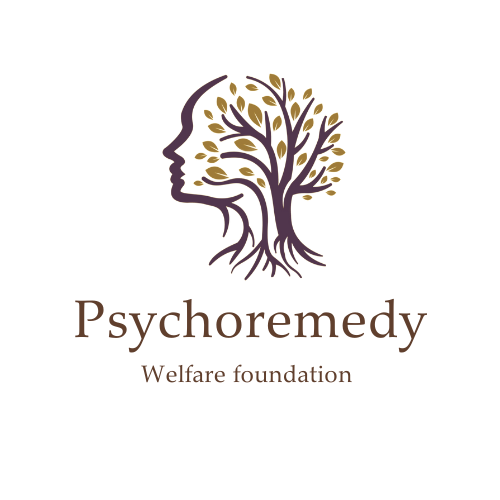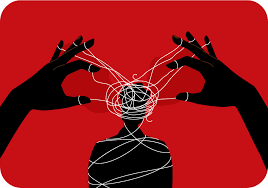The Digital Couch: Finding the Promise and Pitfalls of Tech-Enabled Mental Health
Introduction
As the age of instant access and online connection, the landscape of mental health is drastically changing. The classic method of face-to-face therapy is quickly adapting to a new set of tools: teletherapy, mobile health apps, and even artificial intelligence (AI) chatbots. This explosion of technology-infused mental health care has been fueled by a heightened understanding of mental illness and a desire for more convenient, cost-effective, and accessible treatment. But as the digital revolution redraws the map of what it means to seek assistance, an urgent question remains: What is the actual effect of these technologies on our mental health, and how do we make sense of this new terrain?
This article investigates the psychological and neuroscientific basis of tech-enabled mental health, reviewing the evidence for its efficacy, as well as its possible limitations, in order to present a balanced view for those considering these services.
SEO Keywords: Digital mental health, teletherapy, mental health applications, AI therapy, digital well-being, online counseling, neuroscience of mental well-being, accessible mental health care, anxiety applications, depression therapy.
The Promises of a Digital Revolution in Mental Health
The attraction of technology-based mental health is undeniable. For others, it offers a major advance in reducing barriers to care.
1. Accessibility and Convenience: The Bridge to Care
For those who live in rural communities, have mobility problems, or have rigid work schedules, the arrangements of standard therapy prove to be overwhelming. Teletherapy, or video counseling, does away with these spatiotemporal barriers. A study in the Journal of Affective Disorders discovered that teletherapy for depression and anxiety was as effective as face-to-face therapy, with the advantage of being more convenient for patients (Varker et al., 2019). The convenience of reaching out to a licensed therapist from home can alleviate intimidation and logistical distress that may come with beginning therapy.
Daily Life Example: A working mother with one child cannot find the time to commit to a weekly hour-long session with a therapist in another part of town. But she can readily commit to a 30-minute teletherapy session during her lunch hour, making regular care a practical possibility for the first time.
2. The Science of the Screen: Biofeedback and Real-Time Data
Mobile wellness apps tend to rely on neuroscientific theory to assist users in controlling stress and anxiety. Apps that include mindfulness exercises and guided meditation can be used to train the brain to govern the amygdala, the brain’s “fear center.” With repeated practice, the techniques can lower the brain’s reactivity to stress (Lazarus & Folkman, 1984). Some apps employ biofeedback through integration with wearable technology to monitor heart rate variability and breathing rates. This real-time information enables users to observe the physiological effects of their stress and learn to self-regulate more efficiently.
Daily Life Example: A worker grappling with chronic job stress practices using a meditation app for five minutes each morning. After a while, they find they are less reactive to stressful messages, a change substantiated by fMRI research demonstrating that mindfulness may enhance activity in the prefrontal cortex, the region associated with executive function and emotional control (Hölzel et al., 2011).
3. AI as a Companion: The Era of Chatbots
AI chatbots like Woebot or Wysa are not meant to substitute human therapists but be a friendly companion. Based on principles of Cognitive Behavioral Therapy (CBT), they assist users in recognizing and changing negative thought patterns. For an individual who is apprehensive about talking to a human or requires urgent help, a chatbot proves to be a secure, non-judgmental environment. A Journal of Medical Internet Research study revealed that a chatbot offering CBT-based training lowered depression symptoms in young people over a two-week period (Fitzpatrick et al., 2017).
The Pitfalls and Perils of the Digital Divide
Much as they have the potential to help, technology-based mental health treatment is not free from risks and downsides.
1. The Lack of Human Touch: A Neurobiological Gap
Therapeutic relationship is the foundation of good mental health care. The subtleties of human interaction—body language, tone, and the space between us in a room—are essential to establishing trust and empathy. From a neuroscientific point of view, face-to-face therapy can trigger oxytocin release, a hormone associated with social bonding and trust, that is essential to healing trauma and forming secure attachment (Kirsch et al., 2005). Teletherapy, as useful as it may be, sometimes fails to capture the complete depth of such non-verbal communication, and neither can an app nor a chatbot.
Daily Life Example: An adolescent with social anxiety finds teletherapy useful in coping with his fears but continues to have problems establishing a close, trusting relationship with his therapist. The tacit communication of a mutual presence is lacking, which complicates his efforts to feel completely understood and in safety.
2. Data Privacy and Security: A Trusting Relationship
The nature of digital mental health services itself is inherently problematic with regard to data privacy and security. The data relayed to apps and chatbots is extremely personal. Although most platforms operate under strict privacy protocols such as HIPAA, there is always a possibility of data breaches or the sale of anonymized data to third parties. For those who have experienced trauma or are not trusting, these issues can be the biggest barrier to participation.
3. The Issue of Misinformation and Lack of Regulation
The digital wellness arena is not heavily regulated. A simple search yields thousands of apps, but not all are evidence-based or produced by mental health specialists. Some apps will provide generic tips, dispense unsubstantiated advice, or even include misinformation that can cause harm. Consumers need to be careful and extensively screen any app or service they wish to use.
Navigating the Future: Finding Balance
Tech-based mental health is an empowering and essential component of the care of the future. It is not, however, a single solution. The best way to navigate this space is by using these tools strategically and thoughtfully.
Think About Your Needs: For occasional anxiety or a requirement for daily stress reduction, a well-regarded wellness app could be an excellent choice. For a chronic or serious mental health condition, a combination of tele therapy with an approved professional and an app for support between sessions could be more suitable.
Put the Therapeutic Relationship First: If you opt for tele therapy, make sure you connect with a therapist you really like. A solid therapeutic alliance is one of the most powerful predictors of good outcomes, whatever the medium.
Be an Informed Consumer: Research any app or service extensively. Check for ratings by mental health professionals, look for evidence they are effective, and make platforms that explicitly post their data privacy policies your first choice.
Conclusion
The virtual couch is here to stay. Though it provides unprecedented access and groundbreaking new tools, it is not a flawless replacement for the richly human aspect of the therapeutic process. By knowing the neuroscientific underpinnings of these technologies as well as their inherent constraints, we may engage with them in an informed manner. The future of mental health treatment will probably be a hybrid model, where technology and human connection combine, enabling us to discover the optimal blend of support for our individual needs, and ultimately, to flourish in a more complex world.
References
* Fitzpatrick, K. K., Darcy, A., & Reviler, E. (2017). Delivering Cognitive Behaviour Therapy to Young Adults with Symptoms of Depression and Anxiety Using a Fully Automated Conversational Agent (Woe-bot): A Randomised Controlled Trial. Journal of Medical Internet Research, 19(6),.
* Hölzel, B. K., Lazar, S. W., Gard, T., Schuman-Olivier, G., Vago, D. R., & Ott, U. (2011). How Does Mindfulness Meditation Work? Proposing Mechanisms of Action From a Review of the Neuroscientific and Psychological Literature. Perspectives on Psychological Science, 6(6), 537-559.
* Kirsch, P., Esslinger, C., Chen, Q., Mier, D., Lis, S., & Gallhofer, B. (2005). Oxytocin modulates neural circuitry for social cognition and fear in humans. Journal of Neuroscience, 25(49), 11470-11479.
* Lazarus, R. S., & Folkman, S. (1984). Stress, appraisal, and coping. Springer.
* Varker, T., et al. (2019). Efficacy of trauma-focused psychological treatments for posttraumatic stress disorder: A meta-analysis of direct and indirect comparisons. Journal of Affective Disorders,
by Sadia Quratul-Ain


